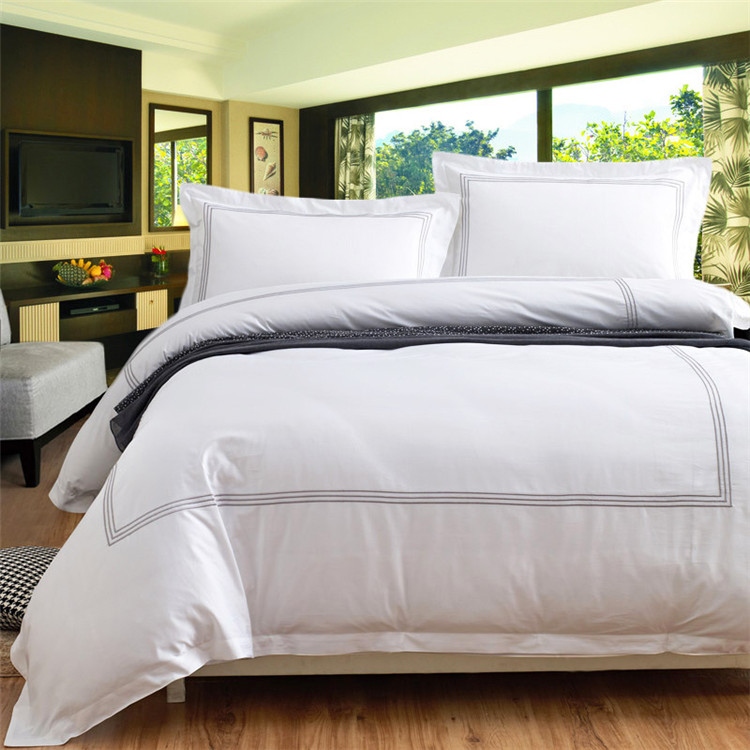The guest room is one of the main sources of revenue for hotels, and the use of bed linen directly impacts guests’ experience of the hotel. Hotel linen refers to cotton textile products, including bedding (bed sheets, duvet covers, pillowcases), fillings (duvets, pillows), and towels (face towels, bath towels, floor towels). To enhance guests’ experience, selecting suitable bed linen should consider the following aspects:
Bed linen mainly includes bed sheets, duvet covers, and pillowcases, which directly contact guests’ skin and significantly affect their sleep and accommodation experience. Suitable fabrics should be soft, skin-friendly, smooth, visually appealing, neither too cold in winter nor too hot in summer. Additionally, factors such as durability, cost-effectiveness, and alignment with the hotel’s positioning should be considered. Although selecting hotel textiles may seem complex, there are certain rules to follow. By understanding the basic elements such as material composition, yarn count, fabric weave, and cotton yarn quality, one can make better choices in terms of the quality of hotel cotton textiles.
- Material Selection:
- Natural fibers: These are naturally occurring fibers with textile value, such as cotton, linen, wool, and silk. Silk is a precious variety in natural fibers, often referred to as the “queen of fibers.”
- Synthetic fibers: These are fibers made from natural or artificially synthesized high polymer materials using chemical or physical methods. Examples include polyester, nylon, and viscose rayon.
Cotton fiber meets comprehensive indicators such as moisture absorption, softness, and strength, making it suitable for hotel textile fabrics. To balance comfort and durability, some polyester content (around 20% to 50%) can be added to enhance fabric strength.
- Yarn Count and Density Selection:
- Yarn count represents the thickness of the warp and weft yarns and is an important indicator determining fabric softness and luster.
- Yarn count categories include coarse count (below 18s), medium count (19s to 29s), fine count (30s to 60s), and ultra-fine count (above 60s). Higher yarn counts result in finer cotton yarn, which provides softer handfeel and better luster. Fabrics woven from 60s yarn can offer good luster, moderate thickness, durability, comfort, and a suitable sensory experience for both winter and summer. Adjustments can be made based on the hotel’s positioning by selecting yarn counts above 60s.
- Density represents the number of warp and weft yarns in the fabric. Reasonable density configuration should meet two requirements: A. The strength in both warp and weft directions should be similar. Fabrics with different yarn counts but the same weave should have similar tightness. Therefore, as the yarn count increases, the density should correspondingly increase, such as 40s × 40s 140 × 120 and 60s × 40s 173 × 120. B. The overall fabric density should balance durability and handfeel, considering the reasonable ratio of various yarn counts and densities commonly used in hotels.
- Fabric Weave Selection:
- Fabric weave represents the method of interlacing warp and weft yarns and is an important indicator affecting fabric softness and luster. Common fabric weaves for hotel use include plain weave, twill weave, satin weave, and jacquard weave. Plain weave, satin weave, and jacquard weave are widely used in hotel fabrics.
- Plain weave: It has more intersections between warp and weft, resulting in a compact fabric with good durability but slightly rougher handfeel and less luster.
- Satin weave: It has fewer intersections between warp and weft, resulting in a fabric with soft handfeel and better luster, generally at higher density.
- Jacquard weave: It provides higher decorative possibilities, allowing for more personalized designs. The cost is relatively higher, but it caters to hotel’s individualized requirements.
- Fabric weave represents the method of interlacing warp and weft yarns and is an important indicator affecting fabric softness and luster. Common fabric weaves for hotel use include plain weave, twill weave, satin weave, and jacquard weave. Plain weave, satin weave, and jacquard weave are widely used in hotel fabrics.
- Cotton Yarn Quality:
- Cotton yarn quality can be classified based on spinning process: combed cotton yarn, semi-combed cotton yarn, and carded cotton yarn. Combed cotton yarn undergoes multiple combing processes to remove short fibers and impurities, leaving behind evenly aligned long fibers. Fabrics woven from combed cotton yarn have good handfeel, luster, and strength. Semi-combed and carded cotton yarns have certain differences in various indicators compared to combed cotton.
Based on the analysis of several key indicators, it can be concluded that a fabric with pure cotton, 60s yarn count, satin weave, and combed fine cotton is a good comprehensive choice. It is generally believed that higher yarn count is better for higher-tier hotels, but this notion can be misleading. While higher yarn count usually results in softer and more lustrous fabrics, it is important to note that high yarn counts should be matched with high densities. Fabrics with high density, thinness, and smoothness may feel cold when entering the bed in winter due to different sensory experiences in different seasons. Therefore, choosing an appropriate yarn count is the most important consideration. Going beyond 80s yarn count may actually lower the cost-effectiveness.
